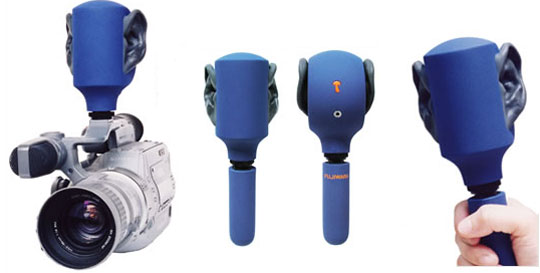Similar to the 'Introduction to Ambisonics' post I do not intend to discuss in great detail how this technique works but feel that it is necessary to provide some context.
The binaural recording technique relies on intensity differences and time of arrival differences of sound reaching the ear drums to enable accurate localisation of a sound source. Spectral filtering or head related transfer functions (HRTF's) caused by the pinnae also contribute significantly to the ability of the human brain to position sound sources above and below the azimuth plane.
Binaural recordings are usually carried out using a 'dummy head'. This dummy head is equipped with two omnidirectional microphones placed inside the ear canal which aim to mimic the ear drum. The effects of the shape of the head and pinnae, on the sounds reaching each microphone, contribute to its ability to accurately reproduce the spatial characteristics of the environment in which the recording is taking place. In order to listen back to, and appreciate fully the spatial cues offered by the technique, it is necessary to listen over headphones or through a loudspeaker system equipped with cross talk cancellation software. This technique lends itself well to recorded sound intended for the mobile entertainment market where most if not all users would be using headphones.
The most common piece of professional apparatus used to capture binaural recordings is the Neumann KU100. Although for my particular project it is not entirely portable therefore not practicable to use anything similar.

Instead, as I have previously discussed in my Concept Development blog, I have opted to use a pair of ear canal mounted omnidirectional microphones to achieve the same effect. At a fraction of the cost of the KU100 these microphones may not offer the same microphone capsule quality but through extensive field testing, can provide exceptionally convincing results.

It can be argued that binaural recordings are only effective when the listeners head closely matches that of the head that was used to capture the sound in the first place. Problems can arise resulting in a listener being unable to discern the position of sound sources that lie directly in front. These sound sources can often be heard 'inside the head' of the listener.
There are several other manufacturers and companies that have realised the potential that this technique can offer. As a result many 'interesting' devices are beginning to appear on the market. These devices may become commonplace, potentially overtaking traditional stereo formats as the demand from consumers for 3 dimensional audio increases.
This is a device from Japanese company Otokinoko

No comments:
Post a Comment